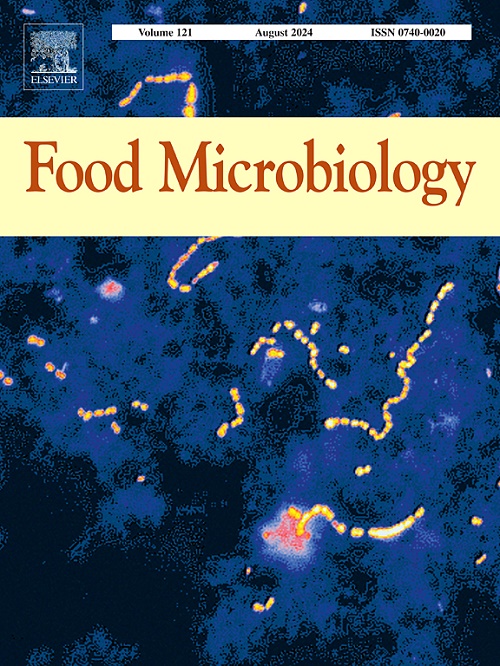Degradation of patulin by a yeast strain Kluyveromyces marxianus XZ1 and its mechanism
IF 4.5
1区 农林科学
Q1 BIOTECHNOLOGY & APPLIED MICROBIOLOGY
引用次数: 0
Abstract
Patulin (PAT) produced by genus of Penicillium spp attracted more and more concern in view of its widespread contamination in food and toxic effects, which has also promoted the research on the reduction of PAT contamination in food. The use of yeast to remove PAT in food is innovative and promising. In this study, we used the yeast Kluyveromyces marxianus XZ1 to degrade PAT, which can remove 90% of PAT (10 μg/mL) within 48 h. XZ1 exhibits high degradation effect on PAT under the conditions of pH range of 3–6, temperatures of 28–37 °C, and initial PAT concentrations below 50 μg/mL. PAT removing by XZ1 was carried out by intracellular enzymes. XZ1 or intracellular enzyme was able to remove 100% of 10 μg/mL PAT in raw apple juice or commercial apple juice within 60 h. Patulin oxidoreductase (KmPAO) was identified as a potential PTA-degrading enzymes, which degrade PAT to form ascladiol. The degradation products of PAT by XZ1 were identified as ascladiol and desoxypatulinic acid, which was then complete degraded to form unknown final degradation products. Toxic analyses on Caco-2 cells showed that the ascladiol, desoxypatulinic acid and the final degradation products were significantly less toxic compared to PAT, which was mainly manifested in less influence on cell vitality, cell integrity and reactive oxygen species accumulation compared to PAT. Finally, the results revealed the PAT degradation enzyme, as well as the safety of the degradation products, which provide basis for the future application of this yeast to decontamination of PAT in food.
马氏克鲁维酵母菌XZ1对展霉素的降解及其机理
由青霉属(Penicillium spp)生产的棒曲霉素(Patulin, PAT)因其在食品中的广泛污染和毒性作用而受到越来越多的关注,这也推动了减少PAT在食品中的污染的研究。利用酵母去除食品中的PAT是一种创新和有前途的方法。本实验以马氏克鲁维酵母XZ1降解PAT,可在48 h内脱除90% (10 μg/mL)的PAT。在pH值为3 ~ 6、温度为28 ~ 37℃、初始PAT浓度低于50 μg/mL的条件下,XZ1对PAT有较高的降解效果。XZ1对PAT的去除是通过胞内酶进行的。XZ1或胞内酶能在60 h内100%去除生苹果汁或市售苹果汁中10 μg/mL的PAT。棒曲霉素氧化还原酶(KmPAO)是一种潜在的降解pta的酶,可降解PAT生成烯丙二醇。经鉴定,XZ1对PAT的降解产物为天冬酚和去氧帕图酸,并将其完全降解,形成未知的最终降解产物。对Caco-2细胞的毒性分析表明,与PAT相比,ascladiol、去氧帕图酸和最终降解产物的毒性显著降低,主要表现在对细胞活力、细胞完整性和活性氧积累的影响较小。最后,研究结果揭示了PAT的降解酶及其降解产物的安全性,为该酵母在食品中PAT的去污应用提供了依据。
本文章由计算机程序翻译,如有差异,请以英文原文为准。
求助全文
约1分钟内获得全文
求助全文
来源期刊

Food microbiology
工程技术-生物工程与应用微生物
CiteScore
11.30
自引率
3.80%
发文量
179
审稿时长
44 days
期刊介绍:
Food Microbiology publishes original research articles, short communications, review papers, letters, news items and book reviews dealing with all aspects of the microbiology of foods. The editors aim to publish manuscripts of the highest quality which are both relevant and applicable to the broad field covered by the journal. Studies must be novel, have a clear connection to food microbiology, and be of general interest to the international community of food microbiologists. The editors make every effort to ensure rapid and fair reviews, resulting in timely publication of accepted manuscripts.
 求助内容:
求助内容: 应助结果提醒方式:
应助结果提醒方式:


